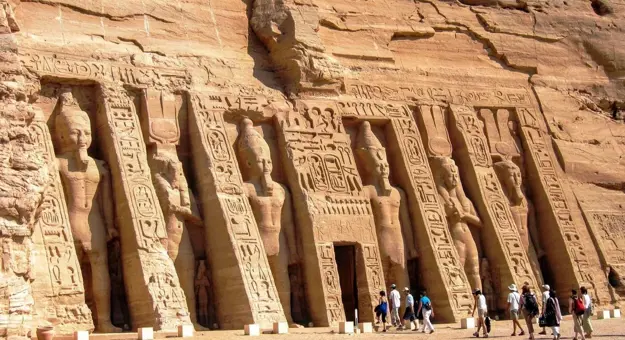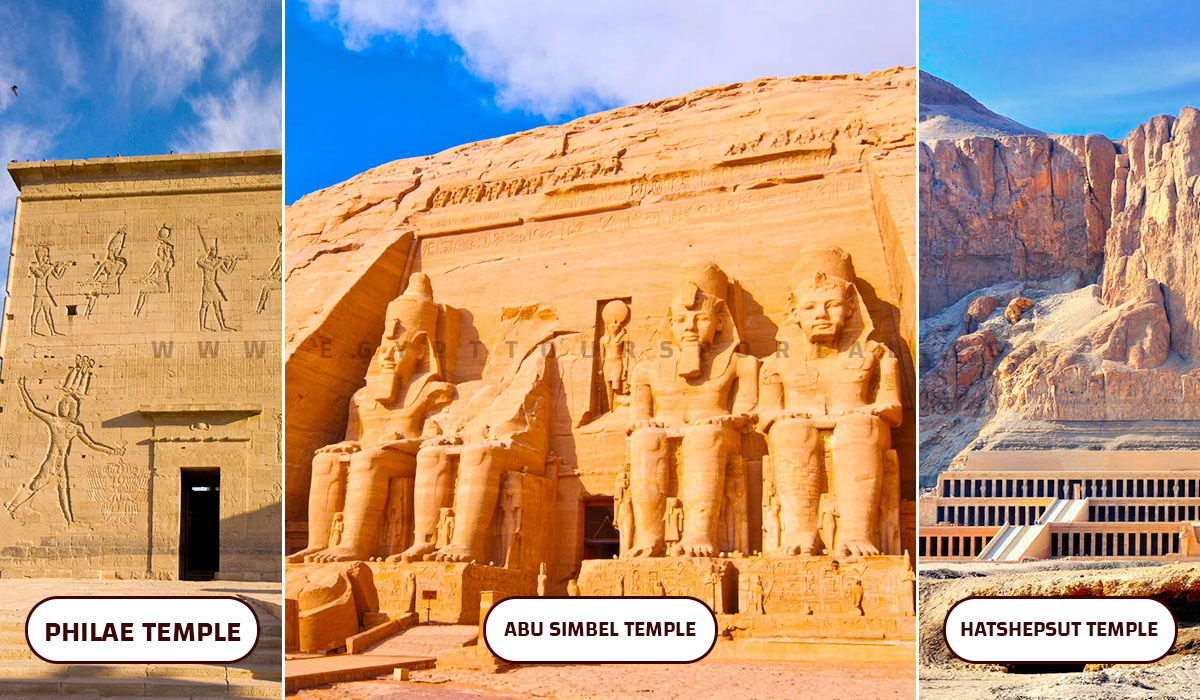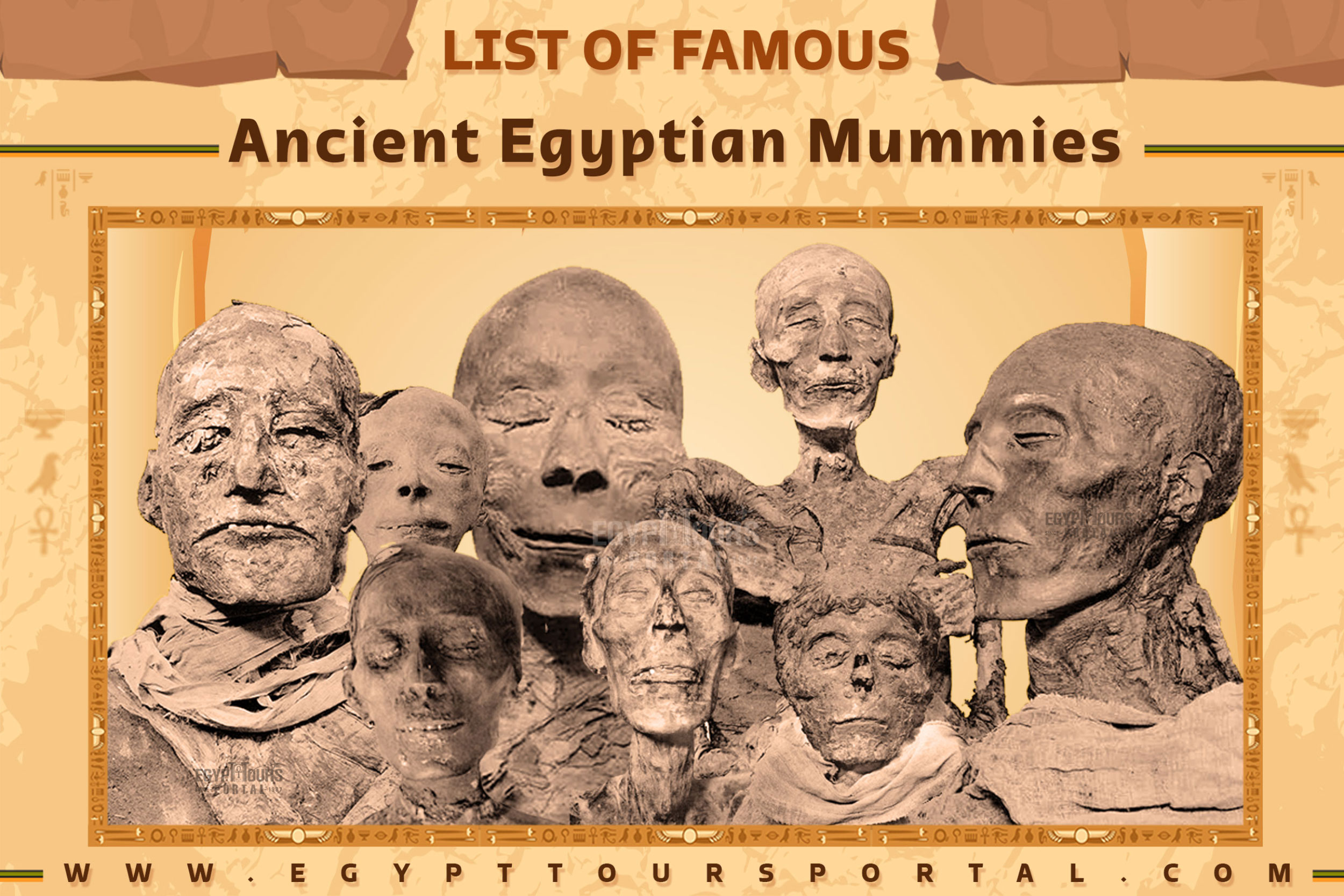Aussie Travel Diaries: Captivating Egypt History Tours Unveiled

Introduction to Aussie Travel Diaries: Captivating Egypt History Tours Unveiled
Overview of the Blog Post
Welcome to the world of Aussie Travel Diaries, where we take you on unforgettable journeys through some of the most fascinating historical landscapes on the planet. In this blog post, we will peel back the layers of time to explore the extraordinary history of Egypt, a country that has inspired countless generations and continues to captivate explorers from around the globe. From the monumental Pyramids of Giza to the breathtaking temples lining the Nile River, you'll discover why Egypt stands as a testament to human ingenuity and spirit.
We’ll embark on a virtual tour of various historical sites, delve into the rich tapestry of ancient Egyptian civilization, and reflect on the impact of modern society. Expect to learn about the pharaohs who ruled this great empire, the enigmatic practice of mummification, and the vibrant contemporary life of Egyptians living alongside the remnants of monumental history. This blog post promises to be an engaging blend of historical insights and practical travel tips, giving you everything you need to plan your next adventure to this wondrous country.
Importance of Exploring Egypt's History
You might wonder why we should explore Egypt's history. Well, the answer lies in the lessons and inspirations we can draw from ancient cultures. Here are a few compelling reasons why diving into Egypt's past is not merely educational but also essential for anyone passionate about travel, history, or culture:
- Understanding Human Achievement: The sheer scale and ambition of ancient Egyptian constructions, like the Great Pyramid, remind us of our capacity for innovation and craftsmanship. Standing at the base of a pyramid, you can appreciate the thousands of years of skilled work and planning that have culminated in such a towering landmark.
- Cultural Continuity: By examining millions of artefacts, from pottery to hieroglyphs, you gain insights into the daily lives, beliefs, and values of ancient Egyptians. This helps you connect the dots between their history and the lives of contemporary Egyptians.
- Inspiration for Modern Society: Despite the passage of time, many themes from ancient Egypt resonate today—leadership, philosophy, and even artistry. Understanding their history can inspire personal reflection and societal growth.
- Tourism and Economy: Exploring Egypt's fascinating history helps sustain its economy. Tourist visits fuel preservation efforts, ensuring that future generations can experience the same awe and wonder as you would.
Imagine strolling through the Valley of the Kings, feeling the weight of history envelop you, or navigating the bustling streets of Cairo while remnants of antiquity peek around every corner. Exploring Egypt is not just about visiting; it’s about understanding the very fabric of human civilization. As we go further, let’s embark on a deeper exploration of this rich tapestry that beckons all who are eager to learn more about the land of the pharaohs!

Exploring Ancient Egyptian Civilization
Pyramids of Giza: Ancient Wonders
As you set foot in Egypt, no visit is truly complete without marvelling at the Pyramids of Giza, one of the most iconic symbols of ancient Egyptian civilization. These architectural masterpieces are not just stunning to behold; they represent a fascinating blend of engineering genius and historical significance.
Built as monumental tombs for the pharaohs, the pyramids showcase the incredible capabilities of ancient Egyptian society. The largest and most famous, the Great Pyramid of Giza, was constructed for Pharaoh Khufu. Here are a few intriguing facts to ponder while you stand before this ancient wonder:
- Construction: Built around 2580 – 2560 BC, it was initially 146.6 meters tall! Although erosion has reduced its height slightly, it remains a staggering sight.
- Materials Used: An estimated 2.3 million blocks of stone, each weighing several tons, were used to create this colossal structure.
- Purpose: More than just a tomb, it was designed to help the pharaoh in his journey to the afterlife, underscoring the ancient Egyptians' deep beliefs in the afterlife.
Walking through the Giza Plateau, you’ll also find the enigmatic Sphinx, a lion-bodied creature with the head of a pharaoh. Its origins remain a subject of debate among historians, but its presence enhances the mystique of the site. Additionally, if you can, consider planning a visit at sunrise or sunset. The golden hues illuminating the pyramids create a breathtaking visual experience that adds a touch of magic to your exploration.
Temples and Tombs of Luxor
Continuing your journey through the heights of ancient Egyptian civilization, the Temples and Tombs of Luxor offer another captivating glimpse into the past. Often referred to as the world’s greatest open-air museum, Luxor is home to impressive ruins that tell many stories.
- Karnak Temple: This vast complex, dedicated to the Theban triad of Amun, Mut, and Khonsu, boasts colossal columns that create a forest-like effect. You can marvel at the hieroglyphics adorning the walls, which illustrate the grandeur of the temple's history.
- Luxor Temple: Strategically located along the Nile River, Luxor Temple was constructed for the rejuvenation of kingship, signifying its importance in royal ceremonies. As you stroll through its palm-lined courtyard, you can’t help but feel the reverberation of ritualistic celebrations that once took place here.
When it comes to tombs, the Valley of the Kings is a must-visit. Nestled within the rugged mountains, this site houses the final resting places of numerous pharaohs, including the famed Tutankhamun. As you enter some of the tombs, take a moment to observe the intricate wall paintings and the careful design that has helped preserve these artworks over millennia. Luxor captures the essence of ancient Egyptian spirituality and artistry, leaving you humbled by their dedication to both life and the afterlife.
As you stand among these timeless structures, you will find that exploring ancient Egyptian civilization feels like stepping back in time, connecting you with the rich narrative of humanity's enduring history. The wonders of Giza and Luxor are just the beginning—Egypt will continue to reveal its countless treasures as you dive deeper!

Nile River: Lifeblood of Egypt
Cruising the Historic Nile
Now that we've explored the monumental accomplishments of ancient Egypt, it’s time to discover the very artery that nourished this remarkable civilization—the Nile River. Often referred to as the lifeblood of Egypt, the Nile is not just a river; it is a source of life, culture, and history that has shaped the Egyptian landscape for thousands of years.
One of the most enchanting ways to experience the Nile is by cruising its vast waters. Picture yourself aboard a comfortable cruise ship, gently gliding along the river as you take in the panoramic views of lush greenery juxtaposed against the arid Egyptian desert. Here are a few highlights to consider on your Nile cruise:
- Historical Sites on the Banks: Each bend of the river reveals breathtaking sights, including ancient temples, tombs, and cities. From the iconic temples of Karnak and Luxor to the mysterious ruins of Edfu and Kom Ombo, each stop offers a unique glimpse into the past.
- Unique Perspective: Cruising the Nile allows you to appreciate the landscape as the ancient Egyptians once did. You’ll feel a deep connection to the very waters that have sustained life and commerce for millennia.
- Sunset Views: Don’t forget to take time to enjoy the stunning sunsets that cast a golden glow over the waters. These moments can become some of the most memorable parts of your Egyptian adventure.
As you unwind and soak in the serene atmosphere on deck, you might also be treated to traditional music and dance performances, enriching your cultural experience.
Visiting Cities Along the River
Along the banks of the Nile, you'll encounter charming cities that are deeply woven into Egypt's rich history. Here are some must-visit locations where you can explore both ancient and modern aspects of Egyptian life:
- Aswan: Known for its relax atmosphere and natural beauty, Aswan is famous for the magnificent Philae Temple, dedicated to the goddess Isis. Don’t forget to explore the Nubian villages nearby, where colourful homes and friendly locals provide a glimpse into a different way of life.
- Luxor: As we previously discussed, Luxor is a treasure trove of ancient wonders. It's a must-visit city rich in history, making it an ideal spot for history enthusiasts.
- Cairo: While technically just off the Nile, the capital city is well worth a visit. Here, alongside historical treasures like the Egyptian Museum, you can delve into the vibrant life of modern Egyptian culture through bustling markets and street food.
- Kom Ombo: This small town has its own unique charm. The Kom Ombo Temple, dedicated to the crocodile god Sobek, is an excellent example of the unique architectural styles of Egypt.
Exploring these cities along the Nile River not only enriches your understanding of Egypt's history but also offers you an authentic glimpse into the daily life of its people. Each location has stories to tell and experiences to offer, ensuring that your journey along the Nile is both enlightening and memorable.
As we sail back to the larger picture of Egyptian history, you will find that the Nile does not just serve as a geographic feature; it is a vital part of the narrative that defines this incredible land. From the ancient past to the thriving present, the river truly encapsulates the essence of Egypt.

Uncovering Pharaohs and Mummies
Introducing Egyptian Royalty
As we delve deeper into Egypt's captivating history, we cannot overlook the fascinating figures that shaped this ancient civilization—its pharaohs. These majestic leaders were not just rulers; they were considered gods on Earth, embodying the divine connection between the cosmos and the Nile.
Pharaohs commanded immense power and played crucial roles in maintaining Ma'at, the ancient Egyptian concept of order and harmony. Their reigns have been marked by monumental achievements, triumphs in war, and ambitious construction projects. Here are some notable pharaohs who left an indelible mark on history:
- Tutankhamun: Perhaps the most famous pharaoh due to the discovery of his nearly intact tomb in 1922, Tutankhamun became king at a young age. His reign was brief, but his legacy lives on, making him a symbol of ancient Egypt’s opulence and mystery.
- Ramses II: Known as Ramses the Great, he reigned for over 66 years and is often regarded as the most powerful pharaoh of ancient Egypt. His military conquests and extensive building projects, including the majestic Abu Simbel temples, underscore his greatness.
- Cleopatra VII: The last active ruler of the Ptolemaic Kingdom, Cleopatra is noteworthy not just for her royal lineage but also for her cunning political acumen. Her alliances with Julius Caesar and Mark Antony have made her legendary in the annals of history.
Walking through the Valley of the Kings, where many pharaohs were buried, you'll feel an overwhelming sense of connection to these extraordinary leaders. The stories of their lives and legacies resonate deeply as you stand before their final resting places.
Discovering Mummification Practices
Equally intriguing is the ancient Egyptian practice of mummification—an elaborate process that reflected their profound beliefs about death and the afterlife. For the Egyptians, the body was a vessel for the soul, thus the preservation of the body was paramount to ensure a successful passage to the afterlife. The mummification process included several intricate steps:
- Removal of Organs: The internal organs, except for the heart, were removed and placed in canopic jars, each guarded by a protective deity. The heart was believed to be the seat of intelligence and emotion, so it was preserved within the body.
- Dehydration: The body was packed with natron—a naturally occurring salt—to dehydrate it. This process took about 40 days, during which the body would lose moisture while preserving it for eternity.
- Wrapping: After the body was sufficiently dried, it was wrapped in linen. Amulets were often placed between the layers to protect the deceased on their journey.
- Final Rites: Finally, the mummified body was placed in a decorated sarcophagus, often adorned with spells and incantations to guide and protect the deceased in the afterlife.
Visiting the mummies on display at various museums can be an awe-inspiring experience. You can’t help but feel a shiver at the thought of the care and devotion that went into preserving these individuals for eternity.
As you uncover the layers of Egyptian royalty and their unique relationship with the afterlife through mummification practices, you’ll find that the mysteries surrounding pharaohs and mummies capture the imagination and illuminate the beliefs of an extraordinary civilization that has left an enduring legacy on our world. The stories of these ancient kings and their preservation practices pave the way for a deeper understanding of human culture and spirituality!

Modern Egypt: Contrasts and Charms
Urban Life in Cairo
Having travelled through the rich tapestry of Egypt's ancient past, we're now poised to experience the vibrant contemporary life in Cairo. As one of the largest cities in Africa and the Middle East, Cairo represents a dazzling blend of old and new, where ancient monuments stand proudly alongside modern buildings, and traditional culture harmonizes with contemporary lifestyles.
Walking through the bustling streets of Cairo, you’ll be enveloped in a sensory overload of sights, sounds, and aromas. Here are some highlights of urban life in this dynamic city:
- The Historic Centre: Start your exploration in Islamic Cairo, where you can wander through the narrow alleyways lined with historic mosques, such as the stunning Mosque of Muhammad Ali. The intricate architectural designs transport you back in time while showcasing the country's rich Islamic heritage.
- Markets and Souks: Don’t miss the famed Khan El Khalili bazaar, a maze of shops brimming with handcrafted goods, spices, and jewellery. Bargaining is the name of the game here, and engaging with local vendors can lead to delightful conversations and unique finds.
- Culinary Delights: Street food is an integral part of Cairo’s urban life. Be sure to try traditional dishes, such as koshari (a rice and lentil concoction) and falafel sandwiches, for an authentic taste of local cuisine. The bustling atmosphere of a street-side café, where people sip tea and engage in lively discussions, is a quintessential Cairo experience.
- Cultural Experiences: The National Museum of Egyptian Civilization in Cairo offers a modern insight into the country’s history, showcasing an array of artefacts and mummies. Engaging with Egypt's contemporary art scene can also enlighten you about societal shifts and the youth's perspectives.
Cairo embodies a fascinating complexity, reflecting a rich cultural heritage while navigating the challenges of modernisation.
Relaxing on the Red Sea Coast
Transitioning from the fervour of Cairo, a visit to the Red Sea Coast provides a splendid contrast, offering relaxation and recreation in stunning surroundings. Taking a few days to unwind along the beautiful shoreline of this iconic sea is the perfect way to balance your Egyptian adventure.
- Sharm El Sheikh: This resort town is famous for its vibrant nightlife and exceptional diving spots. The underwater world of the Red Sea is nothing short of spectacular, with coral reefs teeming with colourful marine life. Whether you are an experienced diver or a snorkeller, the clear waters are inviting.
- Hurghada: If you're looking for a more laid-back experience, Hurghada offers beautiful beaches and serene resorts. The soft golden sands and warm waters provide the perfect backdrop for sunbathing, beach volleyball, or just enjoying a good book under an umbrella.
- Activities and Leisure: Many resorts offer water sports, such as windsurfing, kite surfing, and sailing. If you prefer to stay on land, consider embarking on a desert safari, where you can navigate the stunning landscapes of the Sinai Peninsula or the Eastern Desert.
- Dining by the Sea: As the sun sets on the horizon, indulge in fresh seafood at the beachfront restaurants. Savoring a delicious meal while enjoying the gentle ocean breeze is the perfect way to wind down after an active day.
The Red Sea coastline is not just a destination for relaxation; it is also a gateway to discovering Egypt's natural beauty and marine wonders. Together with the urban vibrancy of Cairo, modern Egypt showcases a kaleidoscope of colours, cultures, and experiences that ensure your journey here is both enriching and memorable.
As you bask in the sun-drenched hues of the Red Sea, you’ll find that Egypt is a land of contrasts—where ancient history meets modern charm, and your adventure is just beginning!
